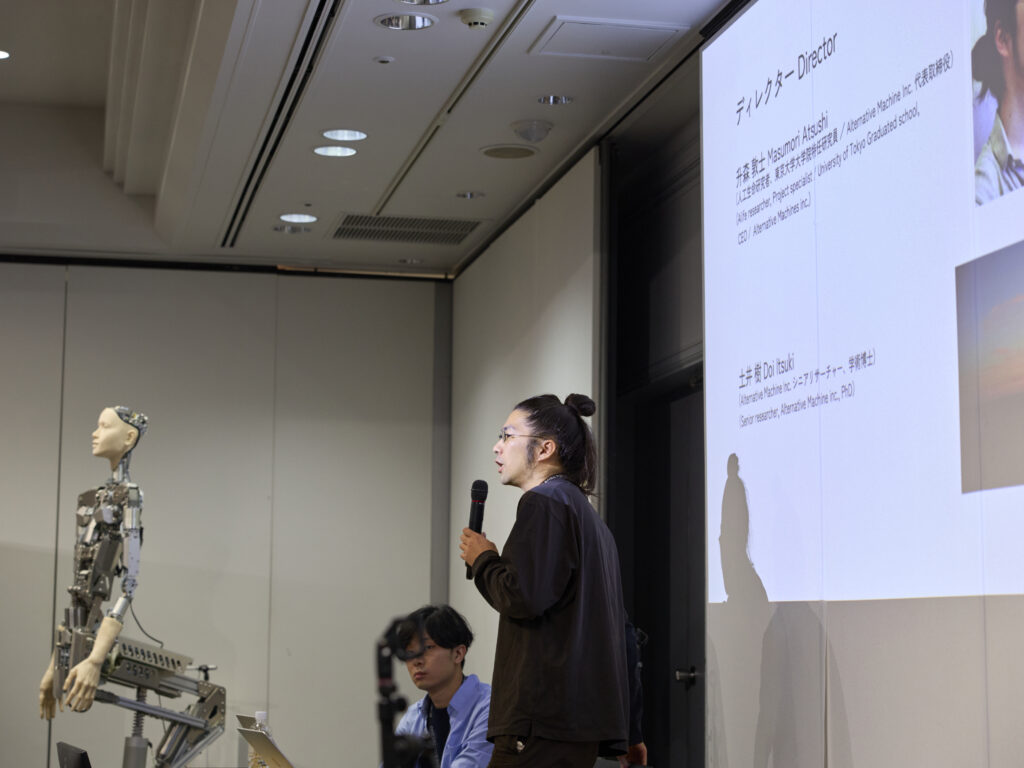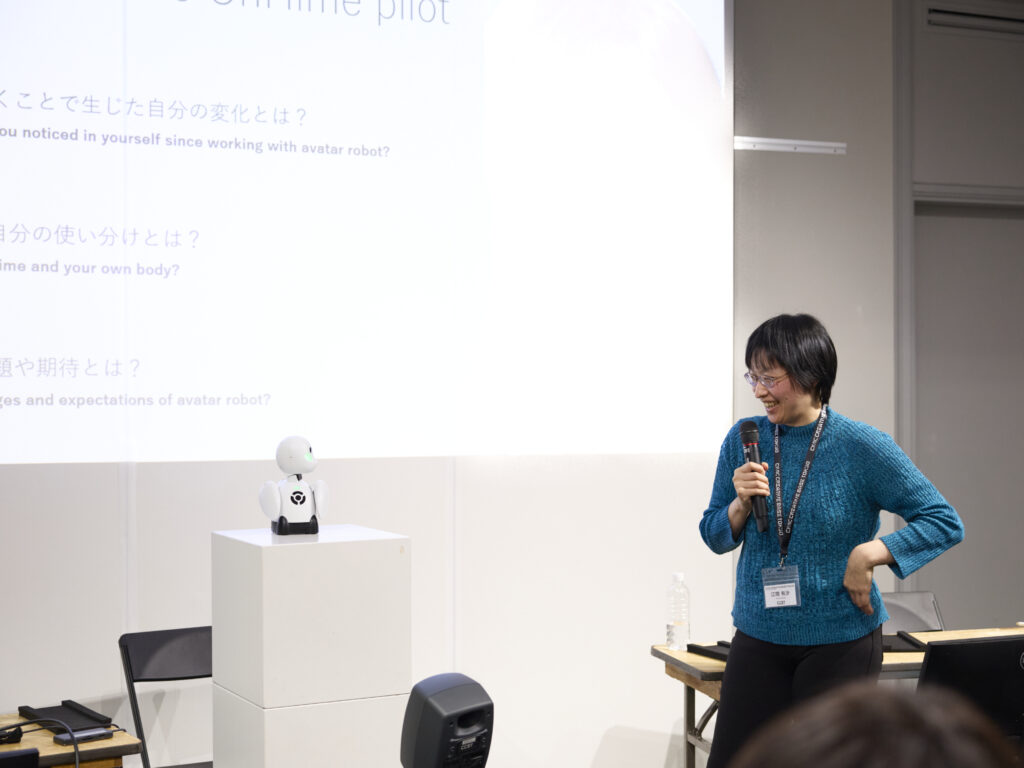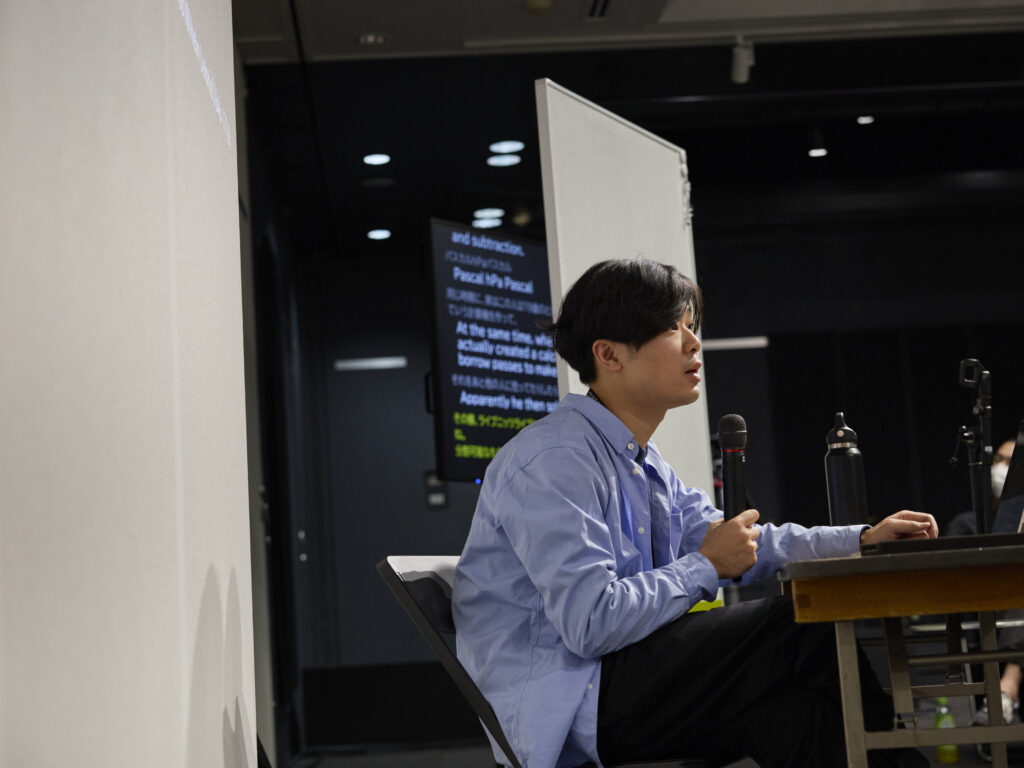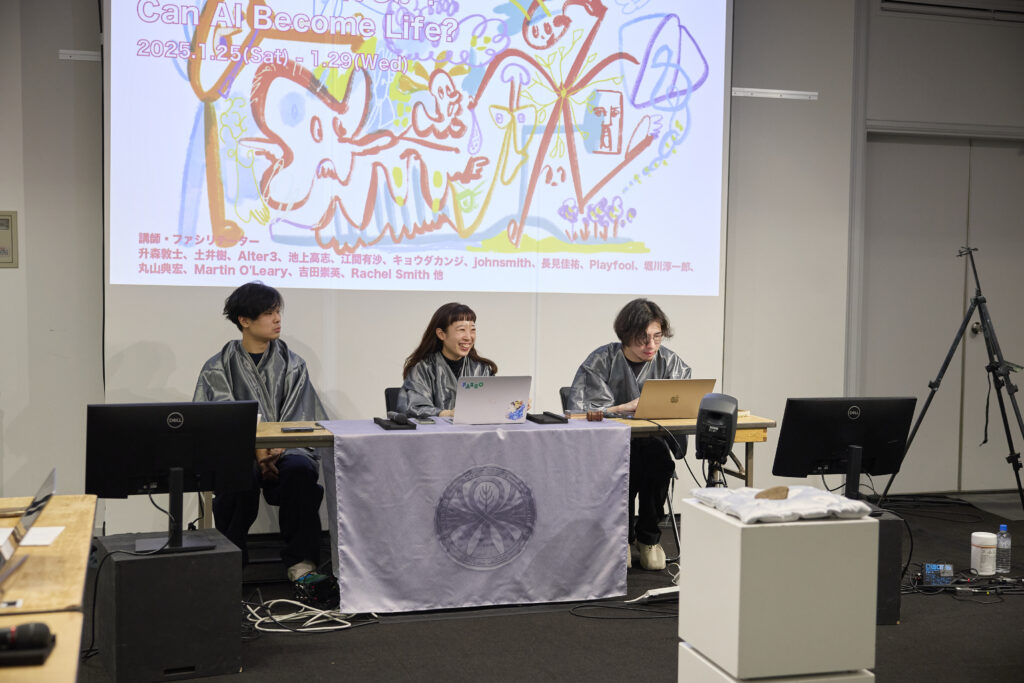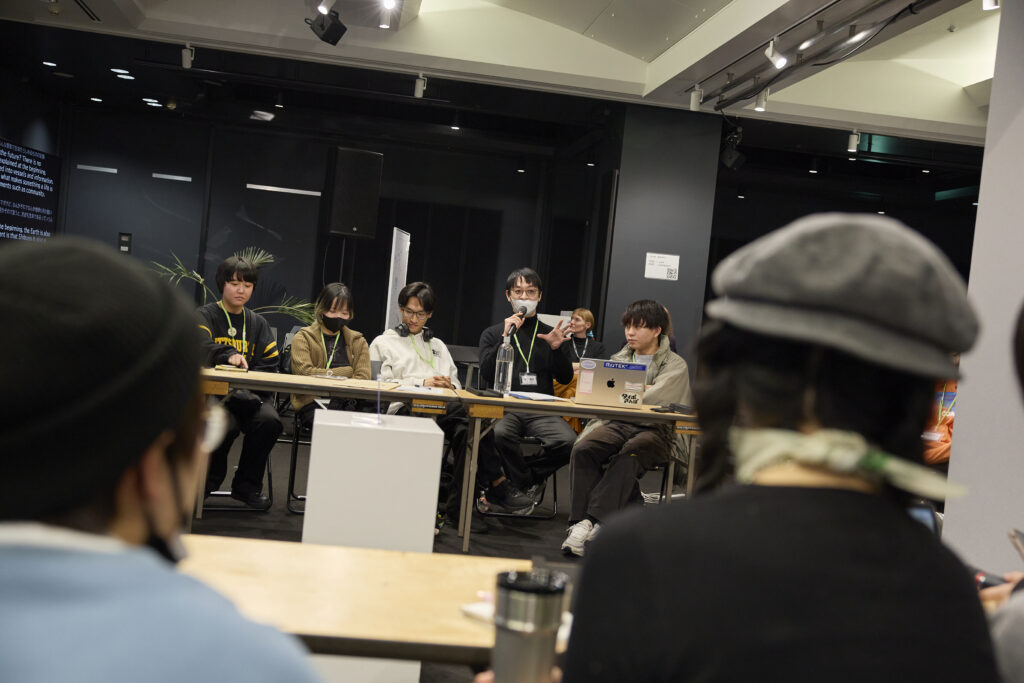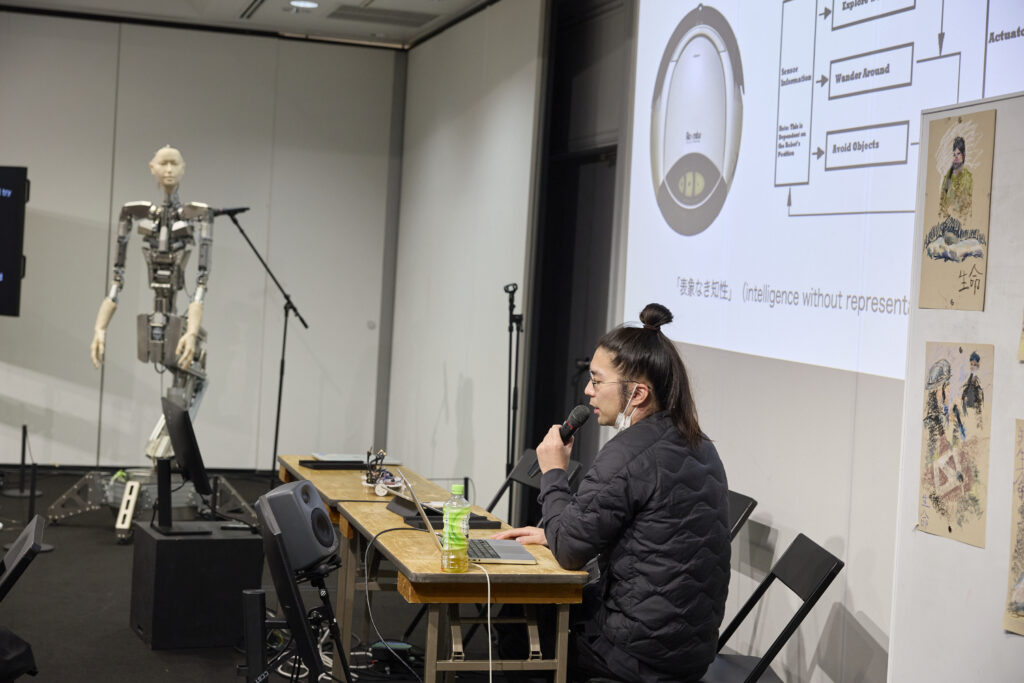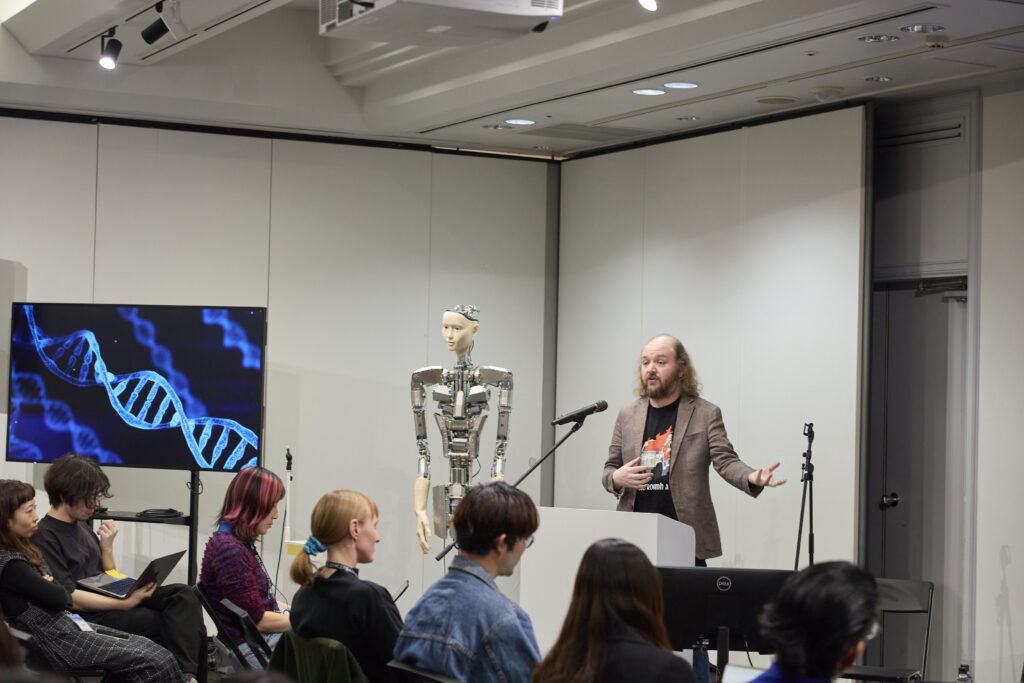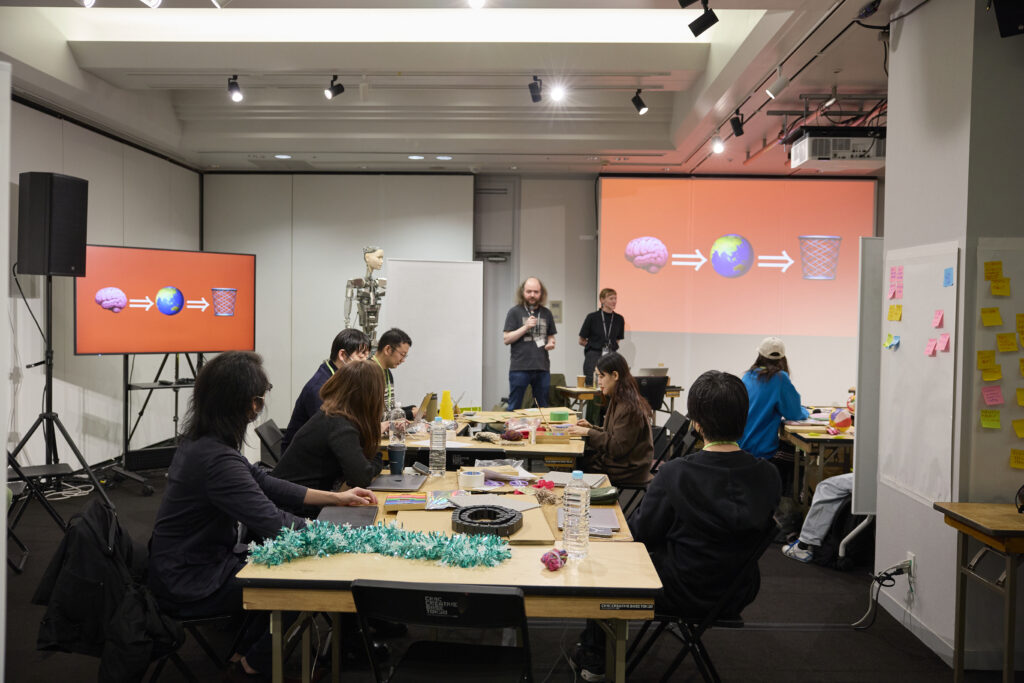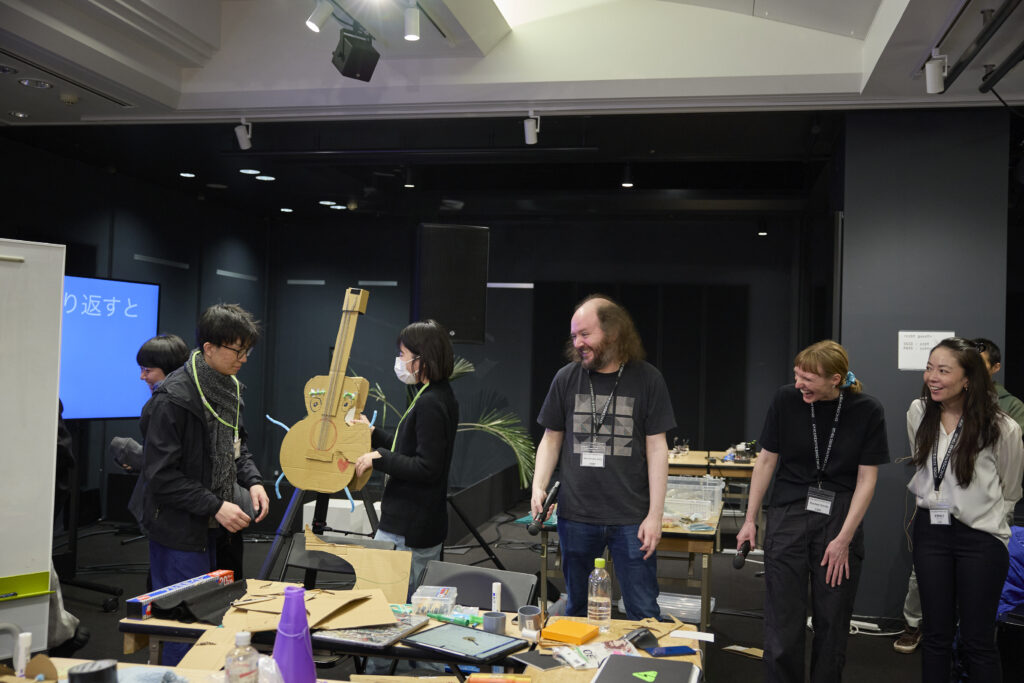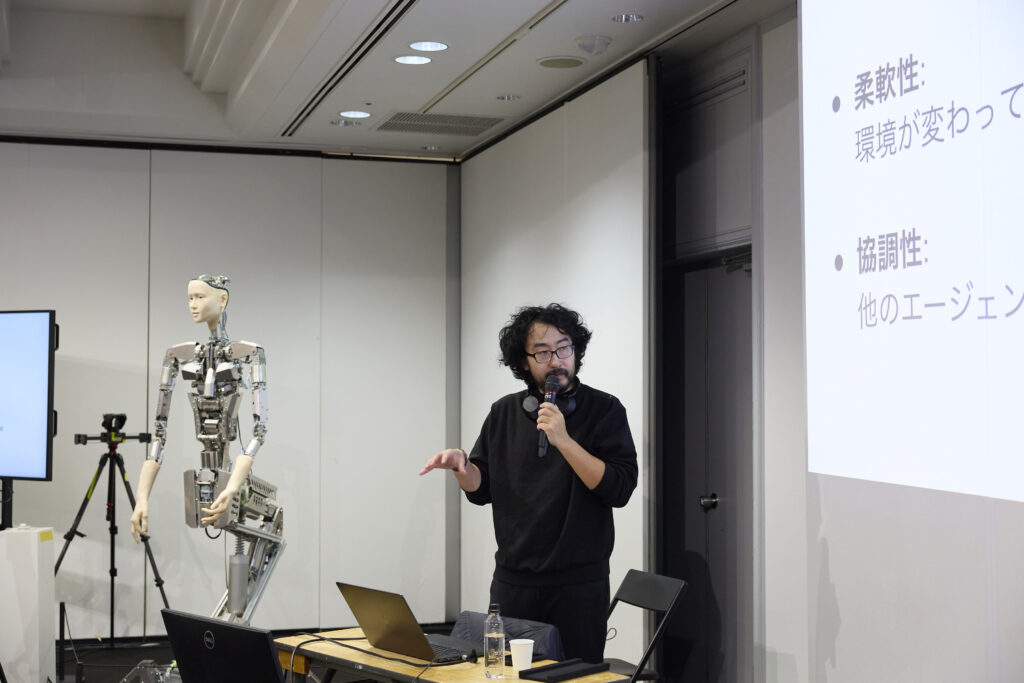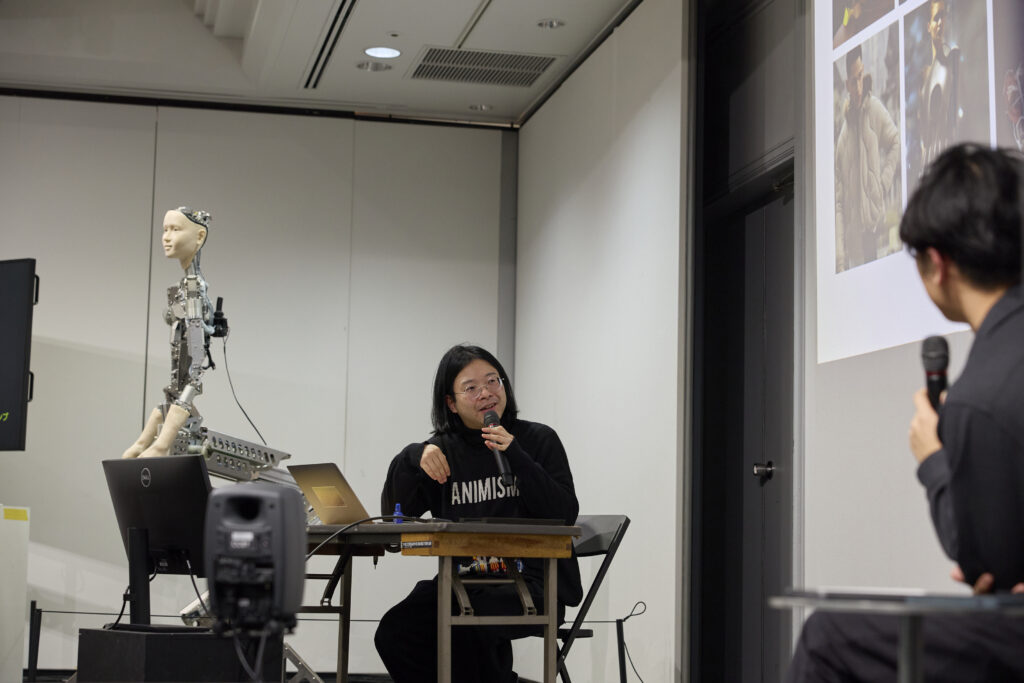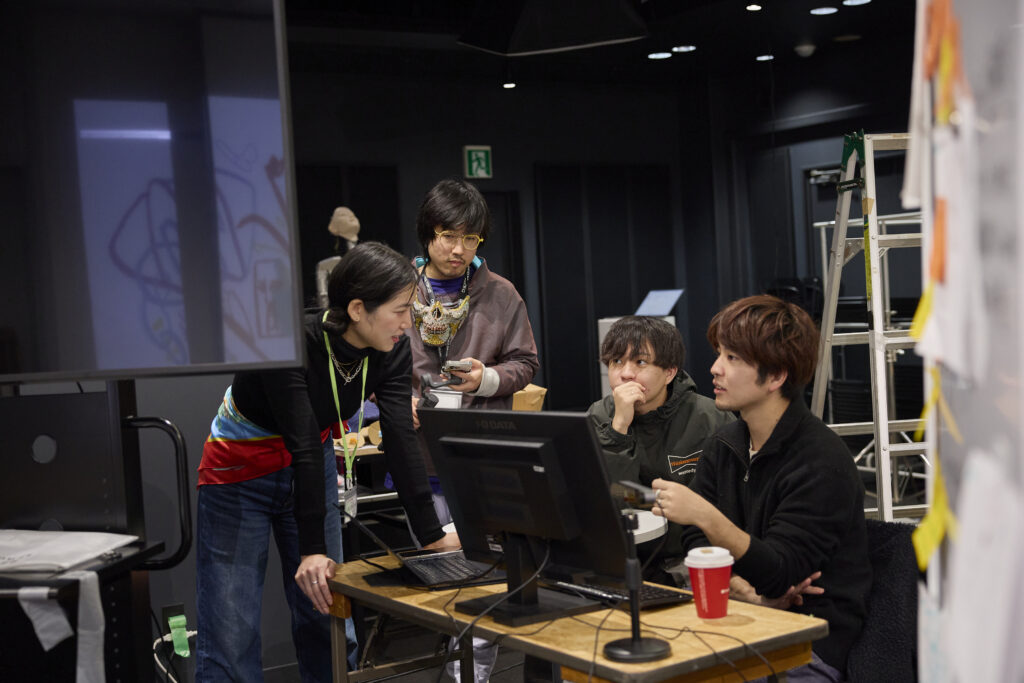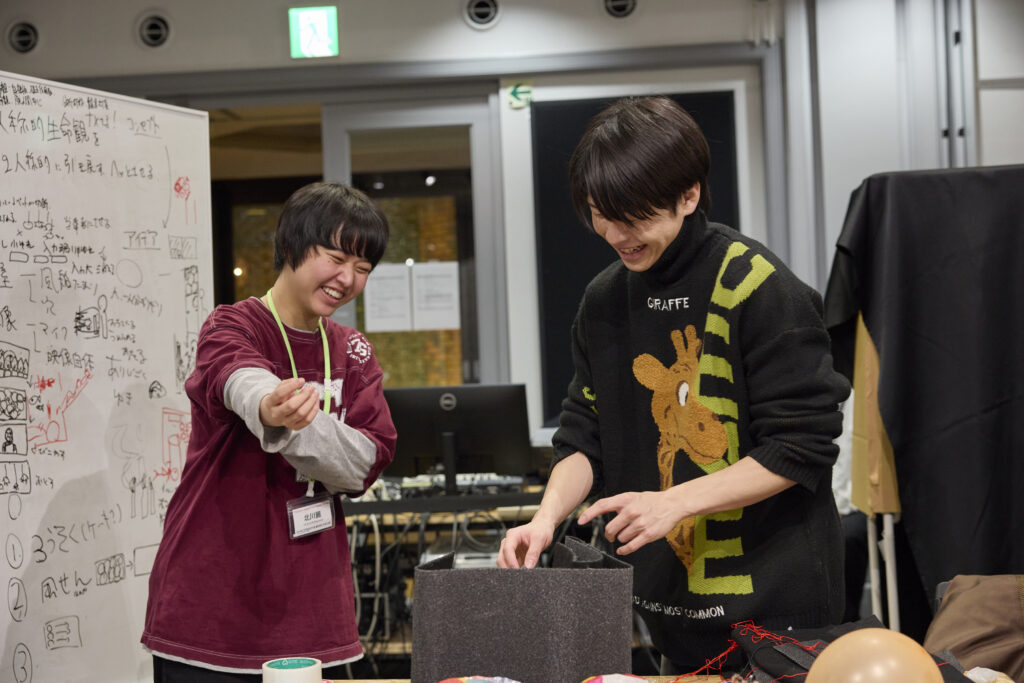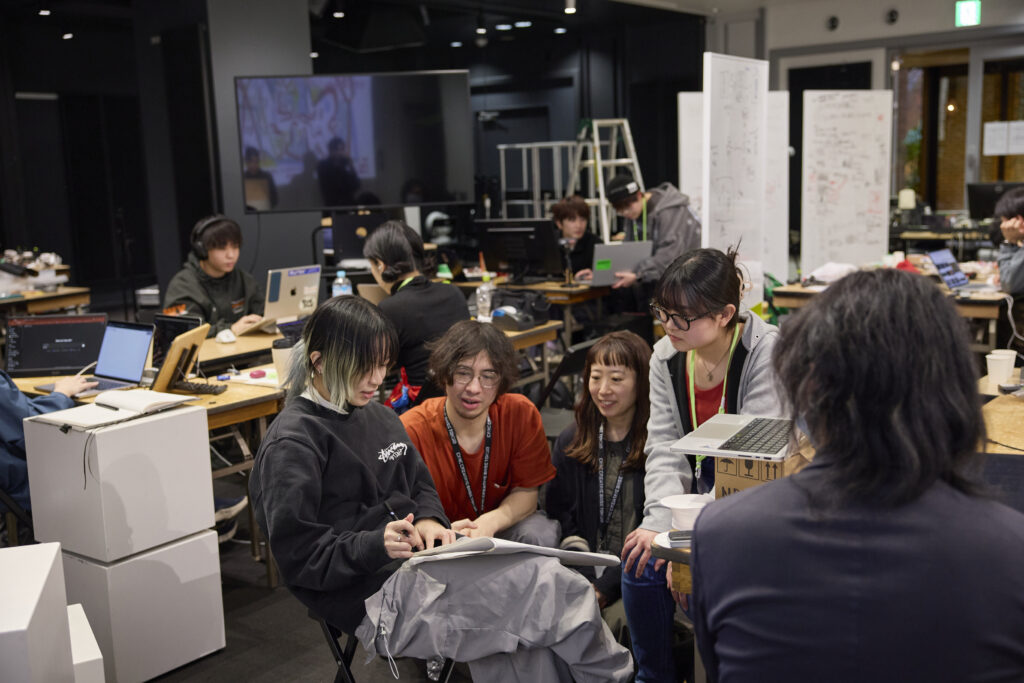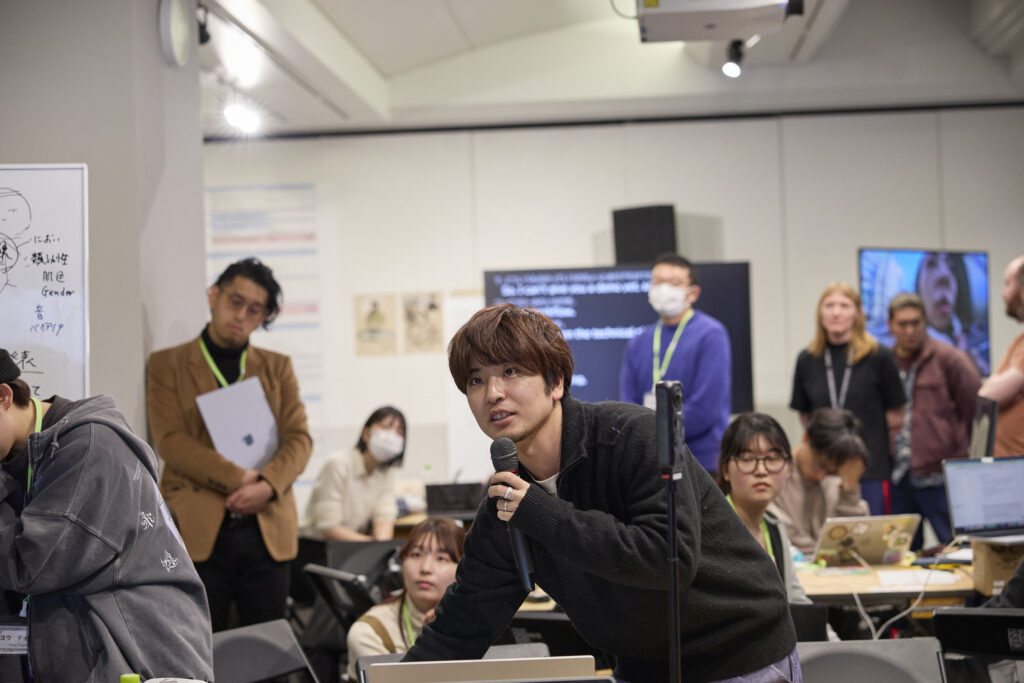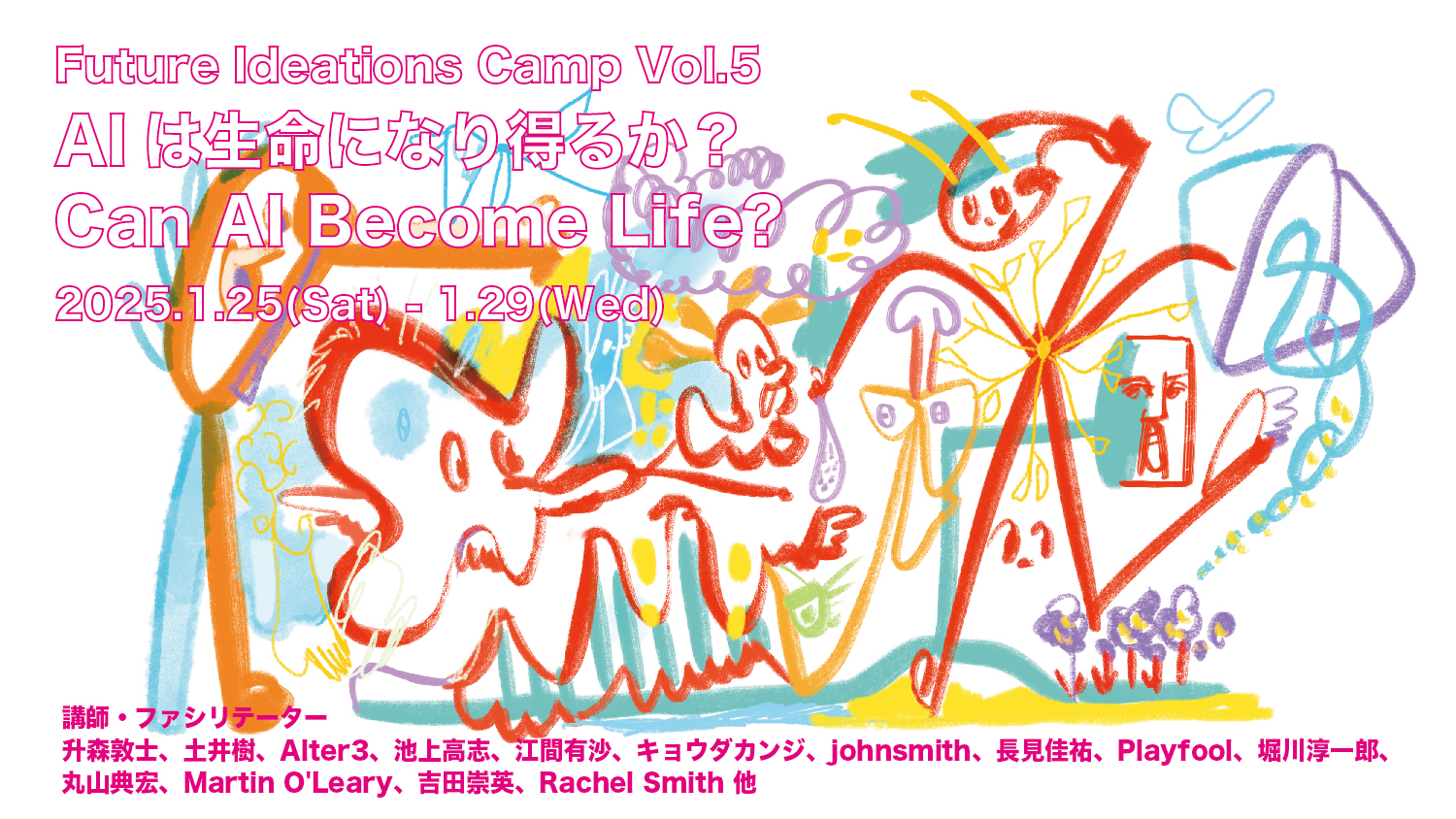
Society and AI: The History of AI
DAY 1
2025.1.25
About the Program, Participants Self Introduction
- [Lecture/Hands-on]How to “get along with” AI/robots?
Lecturer: Ema Arisa (Associate Professor / University of Tokyo, Visiting Researcher / RIKEN Center for Advanced Intelligence Project in Japan) - [Lecture/Hands-on]The Past and Present of AI
Lecturer: Doi Itsuki (Senior Researcher, Alternative Machine Inc., PhD) - [Keynote Lecture]Agency Emerges! Approaches in ALife
Ikegami Takashi (DSc in Physics, Professor / Department of General Systems Studies, Graduate School of Arts and Sciences, The University of Tokyo)
For our 5th Camp, we continued to explore the relationship between humanity and technology, using Artificial Intelligence (AI) and the concept of Autonomy as starting points. The Camp began with self-introductions from the 24 participants, a diverse group who were to collaborate, drawing inspiration from the field of ALife, in examining whether and how AI could be considered life.
The first day provided a revision on the history of AI and its evolution into what we understand it to be today. The Camp’s opening lecture was delivered by Ema Arisa who discussed her research on the relationship between AI, robotics, and society. She introduced real-world applications of AI in industries such as service and hospitality, prompting participants to reflect on AI’s expanding role. The lecture featured OriHime, a robotic avatar, and its remote “pilot,” Yuki, who joined us from Hokkaido. Their interaction sparked discussion about the kind of society we envision as AI and robotics become more integrated into our daily lives.
Next, Doi Itsuki, one of the Camp’s directors, delivered a lecture on the conceptual history of intelligence, tracing its roots back to Socrates. Referencing key thinkers such as Immanuel Kant, John Von Neumann, and Norbert Wiener, Doi explored the historiography of “intelligence,” its mathematical interpretations, and the evolution of modern AI.
The day concluded with a keynote lecture by Ikegami Takashi, a pioneer of ALife research in Japan. Ikegami introduced various approaches to defining life and shared his perspectives on what constitutes life. His lecture provided participants with concrete ideas for tackling the challenges ahead, leaving them inspired for the rest of the Camp.
From Generative AI to ALife?
DAY 2
2025.1.26
- [Workshop]Court of Life
Lecturers: Playfool (Designer, Artist) - [Hands-on]Can AI Become Life?
Lecturers: Masumori Atsushi (ALife researcher, Project Specialist / University of Tokyo Graduate School, CEO / Alternative Machine Inc.), Maruyama Norihiro (Senior Researcher / Alternative Machine Inc., Project Specialist / University of Tokyo Graduate School) - [Meetup]“Hello from the Campers!: Can or Should AI Become Life?”
Day 2 opened with “The Court of Life,” a workshop led by designer-artist duo Playfool (Maruyama Saki and Dan Coppen). Participants, divided into 5 groups, took turns acting as defense attorneys, prosecutors, and jury members in a trial where the three judges—Playfool and Doi Itsuki—posed a fundamental question: is the defendant “alive”?
The “defendants” included a stone, a Roomba, Shibuya, and a Mickey Mouse plush toy. The trial sparked intense debates on defining life, touching on concepts such as organic vs inorganic entities, autonomy, consciousness, and dignity. Participants examined whether these definitions could or should be applied to each of the defendants.
Following this, Masumori Atsushi, the Camp’s co-director, delivered a lecture on key concepts in ALife and AI research including autopoiesis, sensorimotor coupling, subsumption architecture. This set the stage for the hands-on workshop where participants experimented with autonomous robot control using LLMs (large language models). A highlight was the android Alter 3 which appeared on stage, delivered a lecture, and also answered questions from the participants via a QR code.
The day concluded with a Meetup titled “Hello from the Campers! Can or Should AI Become Life?” This featured five Pecha Kucha-style presentations by Martin O’Leary (Watershed) and artist Rachel Smith from Bristol, UK and three volunteers from the participants. The event wrapped up with a lively discussion between the panel, two directors, and the floor covering (anti) human-centrism and AI, and portrayal of seemingly (un)friendly AI robots (Doraemon and Atom Boy) in Japanese popular culture.
Creative Practices in AI and Alife
DAY 3
2025.1.27
- [Hands-on]Rapid Prototyoing
Lecturers: Martin O’Leary (Studio Community Lead / Pervasive Media Studio), Rachel Smith (artist, software engineer and creative technologist) - [Hands-on]Create Autonomous Agencies
Lecturer: Horikawa Junichiro (programmer, algorithmic designer) - [Lecture, Discussion]AI and fashion/ Fashion for AI
Lecturers: Nagami Keisuke (HATRA / fashion designer), Masumori Atsushi, Doi Itsuki - Group Work
Day 3 focused methodologies and case studies that explored AI and ALife technologies.
This began with “Rapid Prototyping,” a workshop led by Martin O’Learly and artist Rachel Smith who introduced the participant with their methodology of “making things quickly and badly,” a creative process consisting of 4 stages: drawing down an idea, breaking it down, testing, and repeating it. Participants randomly picked cards containing nouns, verbs, and reasons generating a silly prompt such as “a toilet, punches, because of words.” Using materials found within CCBT, they rapidly built their prototypes emphasizing quick thinking and resourcefulness.
Then, programmer and algorithmic designer Horikawa Junichiro delivered his hands-on workshop “Creating Autonomous Agents.” Participants used the game engine Unity to explore the Boid Model, a simulation model that mimics the collective behaviour of flocking animals. They learned about the mechanisms of flocking “agents” using these practical tools.
Nagami Keisuke, designer of HATRA, presented “AI and Fashion / Fashion for AI,” the final lecture of the Camp. He introduced innovative approaches in fashion design using generative AI, emphasizing that, for him, generative AI is not only a tool used to generate imagery but instead is a way for him to “travel through latent space.”
Opening up the discussion to the floor, Nagami elaborated on his ideas that clothing serves to “amplify fluctuation” and encouraged participants to question what clothing would mean for AI, a form of intelligence that resides in a higher-dimensional space.
The final task of day 3 was to divide the participants into groups of their interests in preparation for their group work from the following day. The themes that arose were: Symbiotic (Society), Alternative Forms of Intelligence, Fashion, AI’s Perspective on Life and Creativity, and Life as Seen by Humans.
Group Work, Group Presentations
DAY 4
2025.1.28
- Group Work
Facilitators: Masumori Atsushi, Doi Itsuki, Kyoda Kanji, johnsmith, Playfool, Horikawa Junichiro, Maruyama Norihiro, Martin O’Leary, Yoshida Takahide, Rachel Smith - Final Review
DAY 5
2025.1.29
- Group Work
Facilitators: Masumori Atsushi, Doi Itsuki, Kyoda Kanji, johnsmith, Playfool, Horikawa Junichiro, Maruyama Norihiro, Martin O’Leary, Yoshida Takahide, Rachel Smith - Final Presentation

